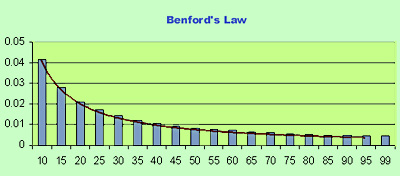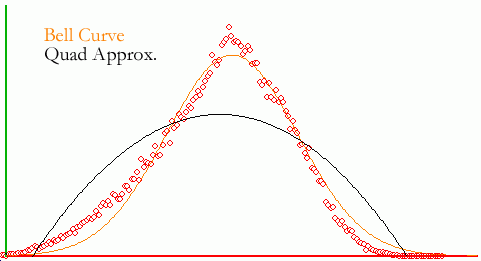Suppose you have some financial data – let us say all the vouchers paid by the company in a given month, and you want to run some tests to determine if there are any anomalies. For example, are the employees beating the approval process by entering say $24.99 vouchers if the limit is $25, or if any fraud is being committed. One way to do this is to use Benford’s law.
Benford’s law states that in a given list of numbers generated naturally (for example stock prices or census figures), the probability of a number starting with 1 is 30.1%. The probability of a number starting with 2 is 17.6% and so on – it keeps decreasing as the numbers increase. The rationale behind it is explained as: it takes a 100% increase to take a number from 100 to 200. However, it takes only a 50% change to go from 200 to 300. 100% increase is more difficult to do (and thus has less probability of happening) than a 50% increase.
In this way, the probability of having a number starting with digit d is given by log(1+1/d), log to base 10. More information is available here. Its usually extended to the first two digits for analysis in the real world.
Download from here a spreadsheet (called Numeric Truth) to carry out this analysis for you. All you have to do is to paste your data into the green cells. After that, on the first sheet it will show the results of first digit analysis, and on the second sheet, two digit analysis. Have a look at the graph, the variances for the individual digits, and the total variance. That should give you a starting point for your analysis/audit.





